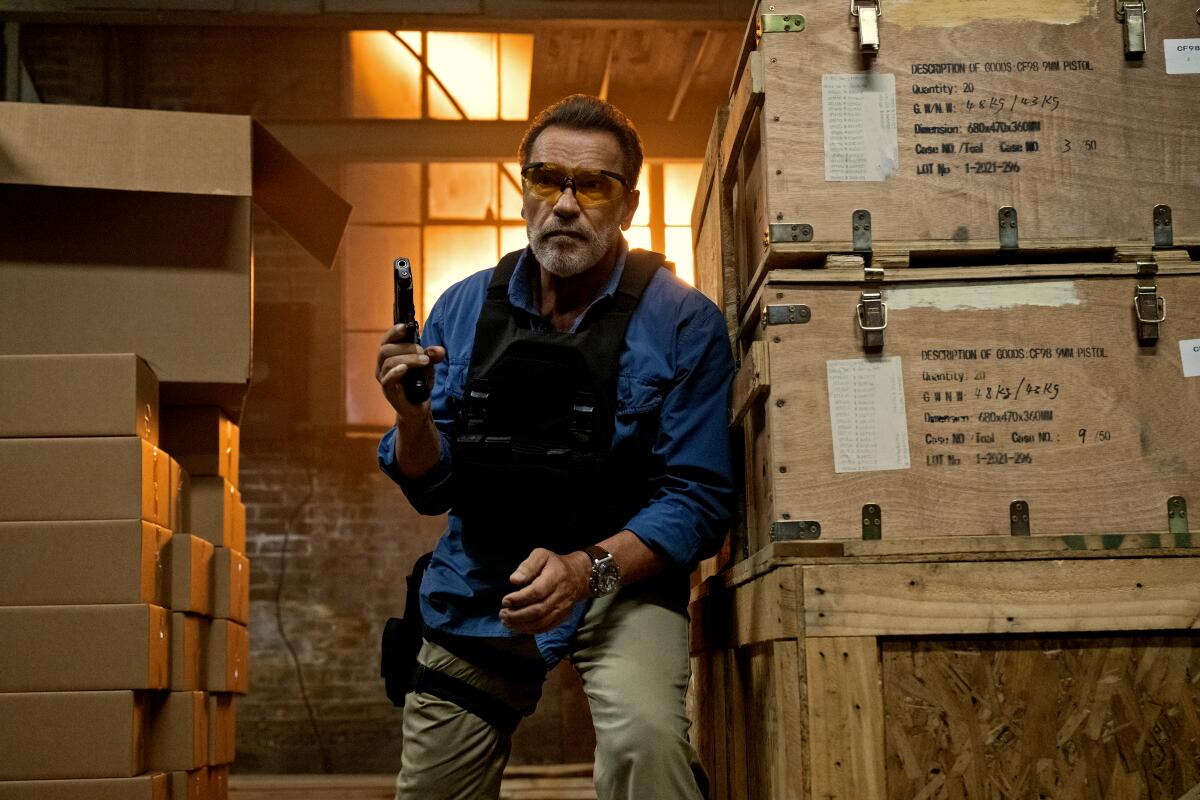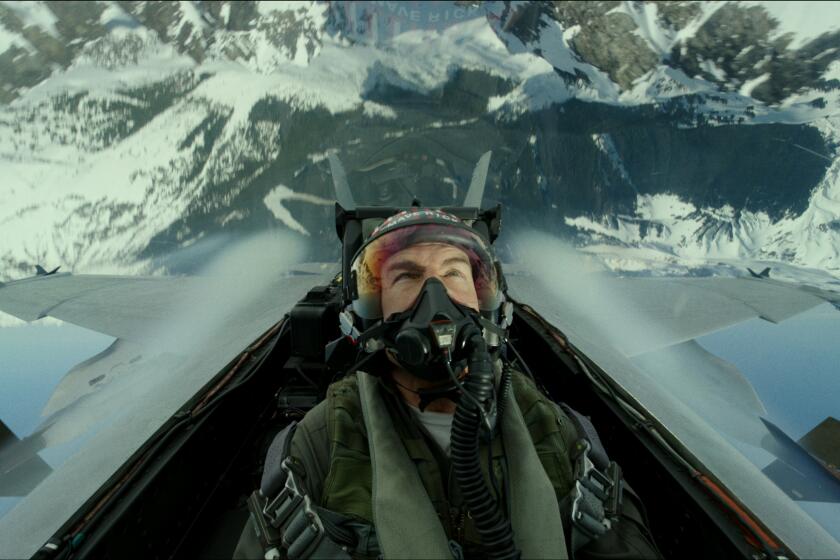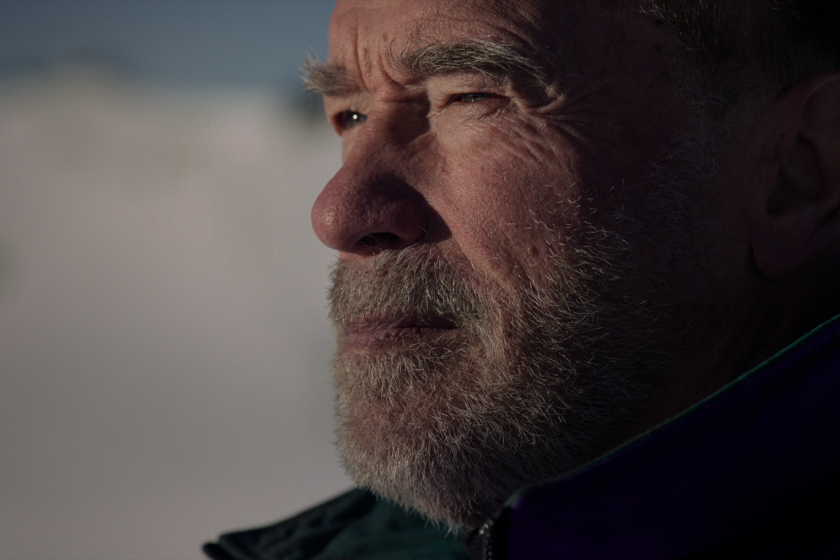Why Schwarzenegger, Stallone and nostalgia for ’80s action movies are back

- Share via
Threats from Moscow. Rampant inflation. A deadly disease resisting eradication. Worries about the replacement of American workers. Sly. Ahnold.
Looking at the news of the past several years, we might think we’ve been rocketed back to the 1980s, just with less neon and fewer Rubik’s Cubes. History is repeating itself, and not only through fractured politics and the threat of a new Cold War.
In the ’80s, a parade of one-man armies marched into movie theaters, dispensing justice and obliterating the baddies — and all the real-world anxieties those villains represented. Arnold Schwarzenegger, Sylvester Stallone and the action stars who followed in their slipstream jibed with the national mood.
Americans have a right to know the extent of the military’s influence on the shows and films they consume.
Forty years ago, anyone afraid and uncertain could seek comfort in the thickly muscled arms of action movie stars, whose characters fulfilled empowerment fantasies by meeting adversity with a wry smile and a loaded machine gun. Stallone’s “Rambo” saga saw a tormented Vietnam vet become so unstoppable that he could head back to the jungle and restore American pride. Other films saw these actors take on drug dealers, serial killers, even — in the case of the bizarre “Cobra” — a cadre of ax-wielding cultists.
As we head into summer, these heroes, as promised, are back. Schwarzenegger and Stallone, both in their 70s, are now mowing down villains in their first TV shows, “FUBAR” and “Tulsa King,” respectively. These shows follow the retro footsteps of last year’s “Top Gun: Maverick,” which blasted to the top of the box office — and landed on Oscar ballots — proving that audiences are ready for some testosterone-soaked nostalgia.
In the 1980s, these movies were a chance to cheer on someone who could actually do something about the threats affecting their lives. For more than a decade, studios have delivered a seemingly endless series of heroes who rely on superpowers to save the day in elaborate, computer-generated scenes. Yet we are still drawn to ’80s-style blockbusters that take place in a world that looks like ours. Watching one gives us a guilt-free hit of adrenaline in dark times.
But action-movie highs come at a cost. They tend to offer cartoonishly simple and violent solutions to complex problems — just as strongmen trying to appeal to desperate citizens do. Certainly the first generation of ’80s action films, and some of the recent renaissance, are frequently misogynistic, and often have nasty streaks of racism and xenophobia.
And those faults can’t just be attributed to the movies being products of their times. “Rambo: Last Blood,” the most recent in the franchise, came out in 2019 and saw its hero take on demonically evil Mexicans, as if a Trump campaign speech had been fused with a Hollywood pitch. Extreme right-leaning politicians have also embraced the action stars of this era. Steven Seagal was feted by Russian President Vladimir Putin this year. Jean-Claude Van Damme’s “Bloodsport” is said to be one of former President Trump’s favorite movies, though he apparently skips through much of the dialogue.
An L.A. Times investigation uncovering the movie star’s sexual misconduct ran just days before he was elected California governor in 2003. Here’s the story of one of the main reporters.
These movies’ stark “we’re good, you’re evil” philosophy affected us in ways we may not have recognized when they came out. The feeling of “you’re either with us or against us” that filled the screen permeates current political discourse. The films’ idolization of firearms, with endless Glocks, pump-actions and assault rifles, has surely helped fan the flames of American gun worship. As outrageously entertaining as Schwarzenegger’s “Commando” is, its director ruefully admits that the movie has been used to stir up child soldiers in Africa before they were forced into combat.
So, how should we think about our nostalgia for these heroes? Perhaps the trick is to approach them with the kind of nuance that’s too often missing these days. We can appreciate their can-do spirit and the excitement they generate, while admitting their dangers and considering how their best qualities might fit in the 21st century.
It’s still thrilling to watch two Terminators grapple in a shopping mall, or see John McClane save Christmas, or cheer as Rocky battles Drago. And it’s strangely soothing right now to watch Arnie melt down a rogue cyborg (take that, ChatGPT!) or Sly decimate a Soviet army (in your face, Putin!). In the short term, they ease our minds — and remind us that in real life we shouldn’t wait for someone else to save us.
Nick de Semlyen is the editor of Empire magazine. His newest book is “The Last Action Heroes: The Triumphs, Flops, and Feuds of Hollywood’s Kings of Carnage.”
More to Read
A cure for the common opinion
Get thought-provoking perspectives with our weekly newsletter.
You may occasionally receive promotional content from the Los Angeles Times.








